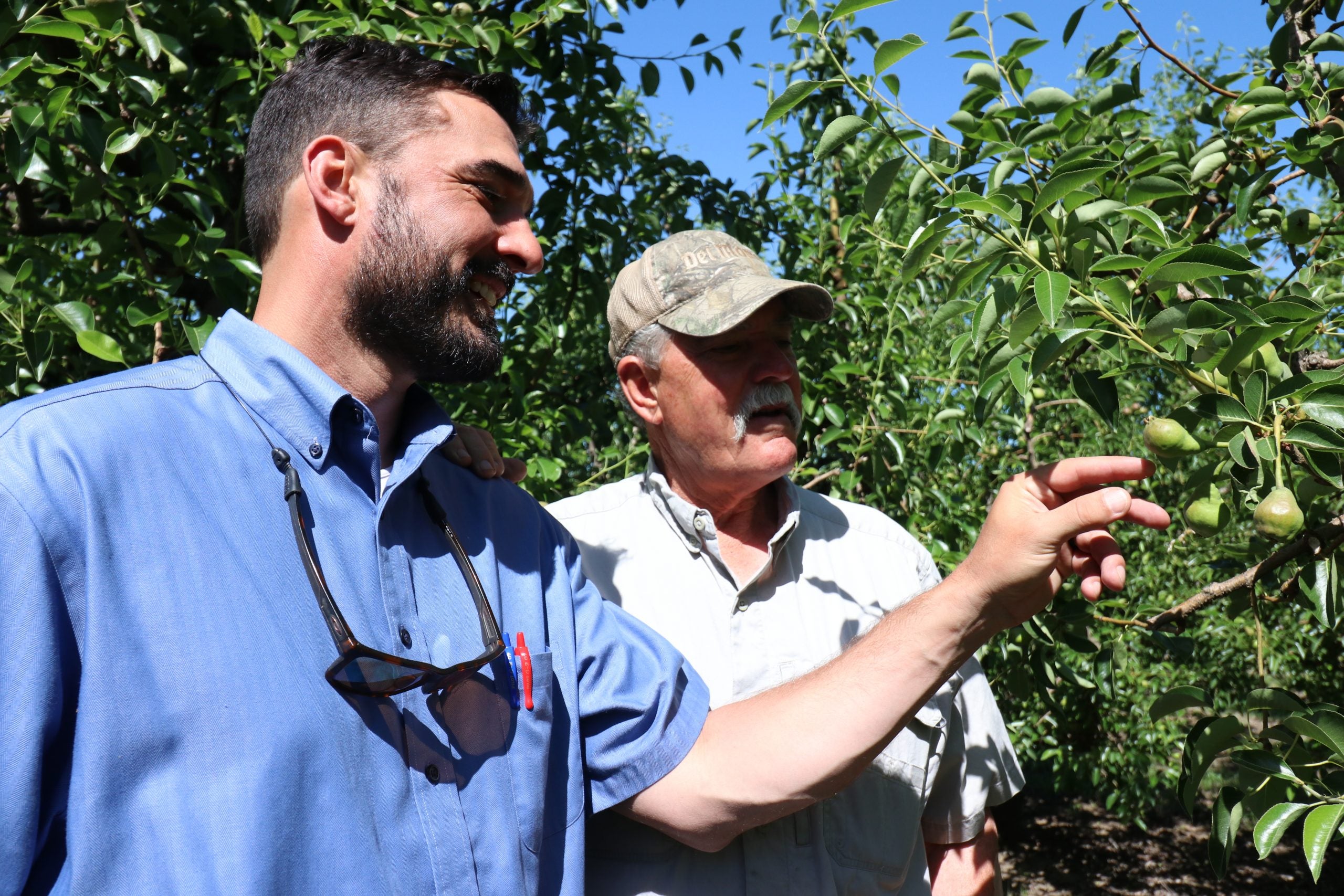Measuring water use in California’s Delta is a “fool’s errand.” OpenET will change that.
As the hub of California’s water system, the Sacramento-San Joaquin Delta is one of the most hydrologically complex and hotly contested areas in the state, if not the world.
That’s according to Brett Baker, a sixth-generation pear farmer and attorney for the Central Delta Water Agency, who also studied biology and fish in the Delta at UC Davis. The agency is one of three in the Delta that provided funding to OpenET, a new online water data platform that lets farmers and water managers easily track how much water crops use.
Starting in 2022, the state will allow farmers to use OpenET to report their annual water use in the Delta, which supplies water to 25 million people and 3 million acres of Central Valley farmland.
I talked to Brett about why this change is so important.
Tell us about your family’s land.
My family has been farming here since the 1850s. Some of our pear trees are 150 years old. With 25 acres, we are one of the smallest pear growers in California. Our property is on a small, skinny island next to Steamboat Slough, a tributary off the Sacramento River.

Can you describe the water situation in the Delta?
In 2009, the California Legislature passed the Delta Reform Act, to administer water rights in the Delta. Then in 2015, the Legislature passed SB 88, which requires Delta landowners to measure and report water use to the state.
But water measurement in the Delta is a fool’s errand because there are so many intertwined aspects to water use here. Measuring just the diverted water that flows through our pipe from the slough to our fields doesn’t give you the full picture. It just gives you a piece of the picture.
How does the state use farmers’ water data?
One of our main concerns as Delta water users is the operation of the state and federal water projects. The operational decision-making for these projects is based on an outmoded and outdated equation from the 1960s. Most of our reported diversion and use data is only used for curtailment purposes and does little to inform real-time project operations.
We hope that project operators can use OpenET to make more informed decisions regarding reservoir releases and project allocations going forward.
As I mentioned, physical measurement of water here is difficult, if not impossible.
Our local water agency installed five meters to measure water in response to SB 88, but the equipment is not infallible. The meters are expensive, clog up and fail often, which requires an excessive number of manhours just to maintain them. Indeed, a great deal of data is missed or forever lost due to mechanical failures. Initial analysis shows that the efficacy of the compiled data is poor.
OpenET will put all of us on the same page — farmers and regulators — using the same data, which is invaluable.
Where does OpenET come in?
Delta water agencies have tried every water measuring technology available to mankind, and farmers feel so much better about OpenET and the utility and accuracy of its data.
The Delta is perfectly suited for using OpenET to really zero in on consumptive use — water used by a local system and no longer available for other uses. That will provide a baseline for water use in California from which we can all improve our understanding and accounting of water in the state.
There’s nothing more frustrating than trying your best to comply and having somebody across the table from you arguing over units of measurement or how you input the data. OpenET will put all of us on the same page — farmers and regulators — using the same data, which is invaluable.
Are there any other benefits to using OpenET?
The fact that OpenET will provide data in near real time is another huge advantage. Right now, we are a year behind schedule because we report water usage after we finish our cropping. We’re getting old data, at best, at a much higher cost than we’ll get with OpenET.
That real-time data alone is of immense value to policymaking decisions related to water use and distribution in California, especially during drought conditions like we’re experiencing now.
You’ll often hear water buffaloes or water policymakers in California refer to the toolbox. OpenET is not just another tool in the toolbox. OpenET is practically a whole new toolbox. It’s really a new paradigm from which to quantify water use that will benefit everybody across the western United States.










